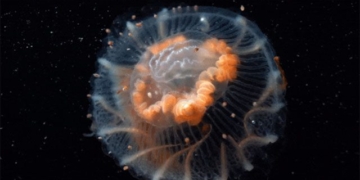Cancer is rarely diagnosed in teenagers, with breast cancer being more common in adult women than in young girls. However, there are certain types of cancer that are more prevalent in this age group, such as testicular cancer, which is frequently seen in young males rather than in their fathers or uncles.
These types of cancers commonly encountered by teenagers share a characteristic: they are related to cells – the “building blocks” of the body. Cancer occurs when cells grow abnormally and multiply uncontrollably. Below are some types of cancer that teenagers may develop, along with warning signs, symptoms, and treatment options.
Malignant Bone Tumor – Osteosarcoma
This is the most common type of bone cancer in teenage boys, often appearing during puberty. Boys are diagnosed with malignant bone tumors at twice the rate of girls, and it is frequently observed in those who are taller than average. The causes may be genetic or a result of another type of cancer, such as retinoblastoma – a tumor that develops in the retina and can precede malignant bone cancer. Teenagers who have received radiation therapy for another type of cancer are more likely to develop osteosarcoma.
The most common symptoms of malignant bone tumors include pain and swelling in an arm or leg, sometimes accompanied by a noticeable lump. Some individuals experience pain at night or during physical activity. Osteosarcoma typically occurs in bones around the knee. In rare cases, the tumor can metastasize from the bone to nerves and blood vessels in the limb. Metastasis refers to the process where cells from one tumor spread beyond the original cancer site to other tissues and organs.
Treatment for malignant bone tumors includes chemotherapy or surgical removal of the tumor. In rare instances, when these methods are ineffective, doctors may perform partial or total amputation of the limb. The affected bone can be removed and replaced with a graft or a special metal prosthesis.
Losing a limb is a heartbreaking experience for teenagers, but thanks to modern medical advancements, those who undergo amputation can often be fitted with prosthetic limbs. Most can return to their normal lives and even participate in sports.
During treatment, patients may experience side effects such as hair loss, bleeding, infections, and complications related to the heart and skin. Chemotherapy can also increase the risk of developing other forms of cancer in the future.
Testicular Cancer
This is the most common type of cancer found in males aged 15-35. Testicular cancer is almost always curable if detected and treated early. Teenage boys should learn how to perform regular self-examinations of their testicles to detect any unusual lumps, which are the earliest signs of testicular cancer.
Leukemia – Blood Cancer
Leukemia is one of the most common types of cancer in teenagers, occurring when the number of lymphocytes increases abnormally, invading the bone marrow and sometimes entering the bloodstream.
Due to defects in these lymphocytes, they cannot protect the body against infections as they normally would. Moreover, due to uncontrolled proliferation, they invade the bone marrow and hinder the production of other important blood cells, such as lymphocytes and platelets.
Leukemia causes bleeding, anemia, bone pain, and infections. It can also spread to other tissues, such as lymph nodes, liver, brain, spleen, and testicles in males.
The common types of blood cancer that occur in teenagers are Acute Lymphoblastic Leukemia (ALL) and Acute Myeloid Leukemia (AML).
Almost all individuals with ALL and AML are treated with chemotherapy, while some may also undergo stem cell transplantation (in which the patient receives stem cells from another individual). Bone marrow transplants are also a common form of stem cell transplantation. Some patients receive radiation therapy. The duration of treatment and types of medications depend on the specific type of cancer.
The prognosis for recovery is very high for some types of blood cancer. The majority of patients with early-stage ALL and AML can achieve complete remission and never experience a relapse.
Brain Tumor
There are two types of brain tumors: primary brain tumors (originating from the cells in the brain) and secondary brain tumors (resulting from a type of cancer that starts in another part of the body and spreads to the brain).
The majority of brain tumors commonly found in teenagers are primary tumors. Two of the many common types are astrocytomas (brain tumors that originate from cells called astrocytes; this type does not metastasize outside the brain and spinal cord and does not affect other tissues) and ependymomas (originating from the lining in the brain’s ventricles).
No one knows the exact cause of primary brain tumors, but one possibility is that an incident occurred with the cells during the development of the brain and spinal cord.
There are various treatment methods for brain tumors depending on the type and location of the tumor. If it is possible to remove the tumor, surgery will be performed, followed by radiation therapy. Some patients may also receive chemotherapy. The survival rate for a brain tumor depends on the type, location, and quality of treatment. If the tumor is removed and followed by thorough treatment, the disease can be completely cured.
Lymphoma
This is a type of cancer that develops in the lymphatic system, which includes lymph nodes, the thymus, the spleen, the pharynx, the tonsils, and bone marrow. This system functions to combat infections and diseases. The majority of teenagers diagnosed with lymphoma will develop one of two forms: Hodgkin’s disease (a form of cancer of the lymphatic tissue) and Non-Hodgkin lymphoma (a form of cancer of the cells in the immune system).
Hodgkin’s disease typically manifests in the lymph nodes in the neck, armpits, or chest. These lymph nodes become enlarged but are not painful. A characteristic feature of Hodgkin’s disease is the presence of large abnormal cells known as Reed-Sternberg cells. Chemotherapy and radiation therapy may be used for this condition.
Non-Hodgkin lymphoma (NHL) is quite similar to Acute Lymphoblastic Leukemia (ALL) since both involve lymphocytes and share many similar symptoms. NHL is generally treated with chemotherapy.
Ewing’s Sarcoma
This is another type of bone cancer known as Ewing’s sarcoma, which primarily affects teenagers and commonly appears in the legs or pelvic area.
Most teenagers diagnosed with Ewing’s sarcoma are treated with chemotherapy and surgery. Some patients may require additional radiation therapy to ensure that any remaining cancer cells are completely eradicated. Ewing’s sarcoma usually responds well to chemotherapy and radiation therapy.
Malignant bone tumors and Ewing’s sarcoma share common risk factors and treatment side effects. The chances of recovery depend on the tumor’s location, size, and potential for metastasis. However, both types of cancer can be cured.
Rhabdomyosarcoma:
This disease is common in young children and teenagers, where cancer cells grow in the soft tissues of striated muscle (the muscles that control movement). Although this type of cancer can occur anywhere in the body, it primarily focuses on the trunk, arms, and legs. The treatment approach and chances of recovery depend on the tumor’s location and the extent of invasion.


















































